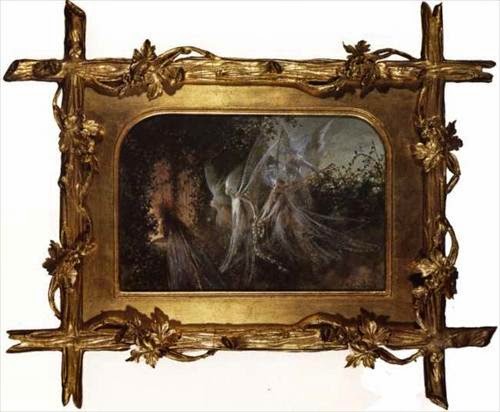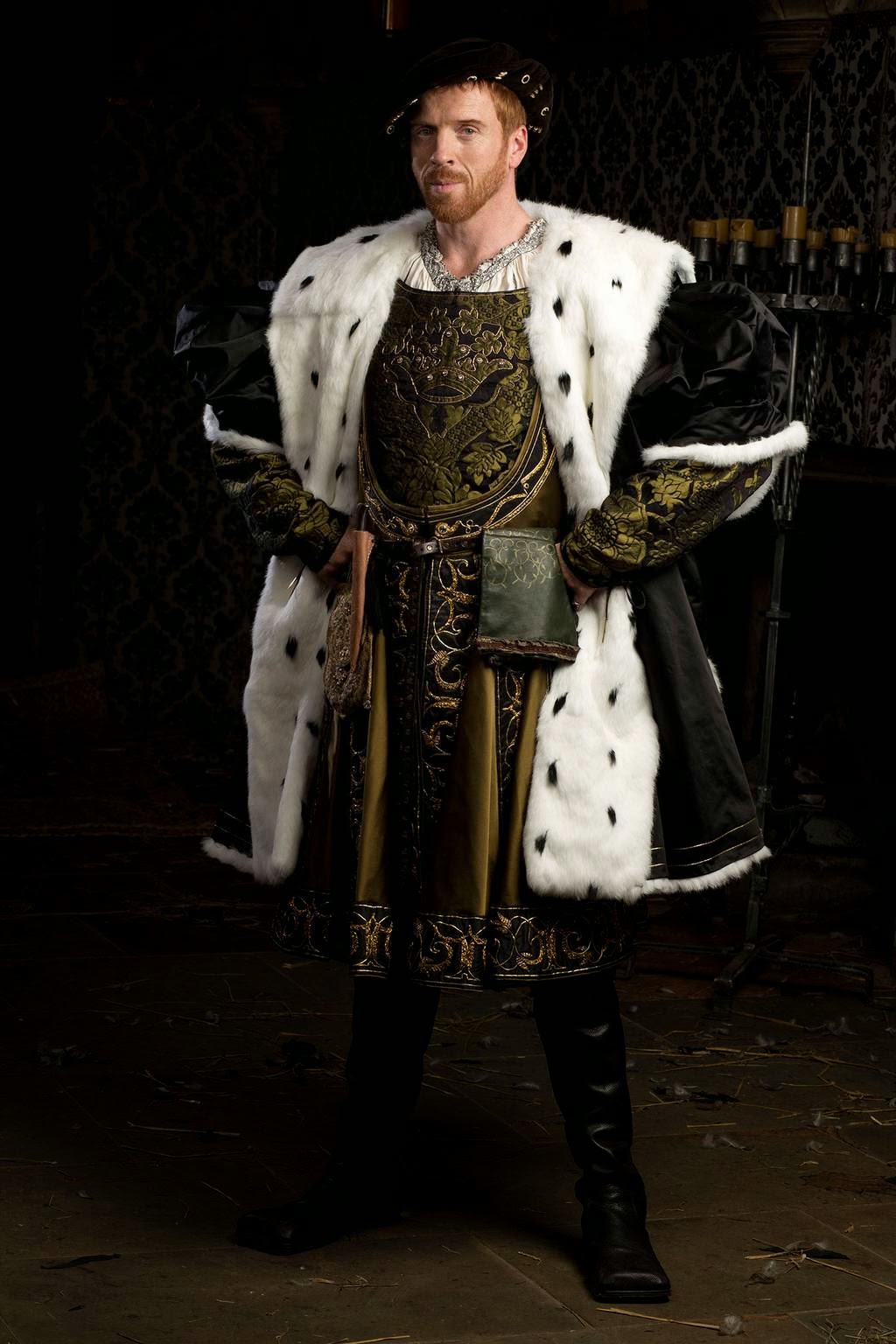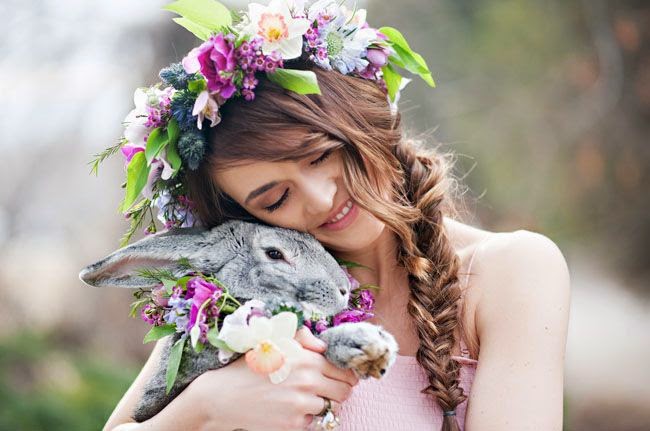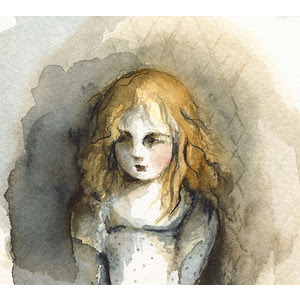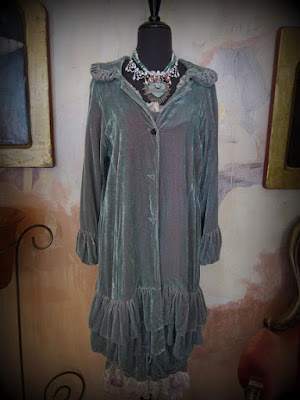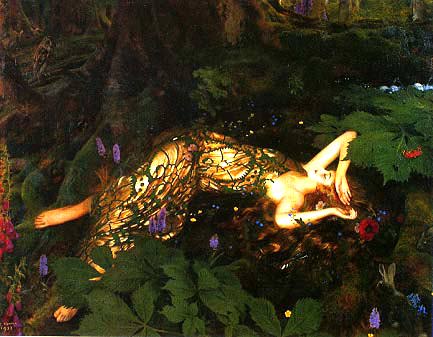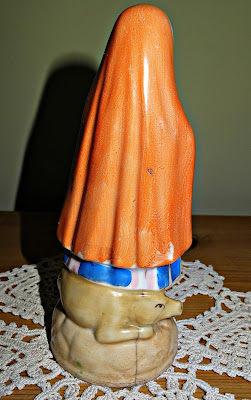![]() |
Bowie fans lay flowers at the mural created in 2013 by Australian street artist James Cochran.
The wall of Morley’s department store, in Tunstall Road, Brixton. It was
commissioned as part of the exhibition, 'The Many Faces of Bowie', at Opera Gallery. |
David Bowie,
January 8, 1947 ~ January 10, 2016
"For God’s sake let us sit upon the ground
And tell sad stories of the death of kings"
~ Act 3, Scene 2, Richard II, William Shakespeare
![]() |
| David Bowie by Bab Webbs |
The path out of the woods, just as the path in, is littered with mysterious things, wondrous adventures, and confusing signposts. As I grew up and began to leave what others declared were childish pastimes behind me, I thought I was turning the page upon those fairy tales, dark towers, haunting characters and glass slippers. But as is often the way, the path which I stumbled upon taking me out of childhood was as strewn with potent magic as all of those tales the Brothers Grimm collected and I cherished.
![]() |
Gareth the Goblin King ~ Bowie in Jim Henson's Labyrinth
Fantasy designer Brian Froud says he drew on inspirations such as Marlon Brando in The Wild One and vivid scenes from Brothers Grimm fairy tales, like the knight "with the worms of death eating through his armor." |
Some would imagine that modern culture - rock music, art and fashion would not offer much in the way of education. But this would not be at all true. I was a teenager in the days before the internet, the days when households had one tv, no PC and music had to be bought at record shops and played on record players which were likely shared with the whole family.
![]()
A real treat was to record favourite songs onto a rickety cassette player so that you could turn it up as loud as you liked out of range of your parents.
We often listened to the music which meant the most to us on very poor quality recordings, but it did not matter. It was thrilling. Music, art and fashion were all linked and because we were so young most of us middle class teenagers had not encountered any of this before.
How worldly the rock stars seemed to us, though in fact they were just a few years older. The subjects contained in their lyrics intrigued, and we investigated. It opened doors to new worlds we may not have discovered by ourselves.
Maybe we could be anything. (We could be heroes, just for one day)
![]() |
| source unknown |
I lived in California in the 70s where I got to see and even speak to several rock stars who lit up the local concert venues as they passed through. All were fascinating to us, the music, tales of far away places and the fashions. Especially the British musicians who dressed and spoke quite differently than the local bands.
![]() |
| At home in Beckenham, early 70s |
Singers stick in the mind since they are centre stage. Marc Bolan, a minature perfectly formed member of the Faerie, Freddie Mercury, stunningly beautiful, elegant and graceful with a huge presence, Bryan Ferry, very masculine, handsome and charming. Robert Plant, as he himself proclaimed, 'a Golden God'. Mick Jagger, mesmerising and in command.
![]() |
The Winterland poster for David Bowie
October 1972 |
My friends and I did not meet, or even speak to David Bowie. But we did have the pleasure of watching him at close quarters. Because we knew the support band we were backstage when Bowie headlined in San Francisco in October 1972, at Bill Graham's Winterland.
![]() |
| Bowie puts on his Ziggy Stardust face |
Unbeknownst to us, sunbathing and still revelling in the long lost 'summer of love' on the shores of the San Francisco Bay, Bowie already had a musical and performing past before he released two albums in 1971, 'The Man Who Sold The World' and 'Hunky Dory'.
The Ziggy Stardust album followed in 1972.
We could only read in the English musical press how that Ziggy hysteria was in full swing in London where fans attended a show at The Rainbow dressed like Ziggy.
In the summer of 1972 he produced Lou Reed's Transformer which included the dark tale of Candy Darling taking her 'Walk On The Wild Side'.He had co-produced Iggy and The Stooges Raw Power. But that was New York, and we were San Francisco where things had a different sound and look. It took awhile for news of this extra terrestial with his Spiders From Mars to be beamed cross the hinterlands of America and land in laid back California. He was a fascinating enigma. Here was this other worldy being, somewhat ethereal, holding court over much harder edged creatures, sounds, looks and words.
He played two nights, October 27th and 28th and spent his days off in San Francisco where Mick Rock shot a promotonal film for The Jean Genie. The song was composed while travelling across the US on a chartered Greyhound bus, recorded in New York and released that November. The promo was filmed at an infamous flop house of a hotel called The Mars. It was located at 192 Fourth Street, corner of Howard, but has been demolished for some years. The location was already part of Northern California folklore, Jack Kerouac had stayed there. Bowie's presence added another layer. Later, in 1974 The Grateful Dead recorded "From the Mars Hotel" at the nearby Automatt. I can remember waiting for a bus in that part of the city and scurrying past The Mars fast. You did not wish to linger there.Although the seedier side of life in a metropolis has always fascinated me. An urban Grimms.
![]() |
| The Mars Hotel, San Francisco |
![]() |
David and Cyrinda Foxe shooting the promo film
by Mick Rock for The Jean Genie |
The support band Sylvester and his Hot Band were fronted by a cross dressing boy with an amazing voice and great dance moves. The audience was small, and comprised of many local gays who followed Sylvester about dressed up in their best finery and full make up. When Sylvester played it was always a party. We were all dancing, girls with boys, girls with girls and boys with boys.
![]() |
| Sylvester |
Bowie's visionary manager Tony DeFries had insisted that concert promoter Bill Graham have a temporary wall built so that no one could actually see Bowie as he ascended to the stage, and the full impact would only be apparent once he was in front of us. This was an audacious request for those days but something was done so that the entrance of Bowie was quite dramatic. (It would have been anyway). Having been involved with the San Francisco Mime Troupe Bill appreciated theatre.
![]() |
| Ziggy Stardust |
The Bowie entourage was growing at each concert venue as the tour progressed. It had a mood - slightly intimidating,self assured and almost as interesting as he. RCA had invested a lot of money to promote Bowie. Tony DeFries told the entourage that if they acted like stars people would believe them. (Which nealy fits with Andy Warhol's," Everyone will be famous for 15 minutes." quote. Bowie's tour group included bodyguards, an official photographer, a hairdresser / wardrobe mistress and administrative staff, plus all of the friends and fans who tagged on. In those days before the internet, before mobile phones and digital cameras few people took photos of everyday life as we do today. I can find no photos of him onstage there. Bowie's management MainMan banned photographers at the Ziggy Stardust concerts other than those sanctioned by them.
We sat backstage and watched. He and the band wore amazing clothes, and there were costume changes during the set. He was hauntingly pale, this red haired vision, so beautiful. We knew next to nothing about him but we did know that this creature who had lit amongst us was not one of us.
![]() |
| Ziggy Stardust |
Michael Collins Morton wrote a wonderful review of these shows in 2009 on his blog 'Nonfiction'.
"The show at Winterland began late, but finally commenced in an impressive manner, with the flicker of a strobe light slowly increasing in speed, and the glorious sound of the "Ode to Joy" from the Symphony No. 9 in D minor by Ludwig van Beethoven, played on a synthesizer, booming out from the speakers. Although the attendance at the show was scant, it was quite clear to me, once David Bowie had taken over the stage, that the imaginative songs and alluring bisexuality of the fey Englishman had an unusual appeal. His orange hair (which had an unearthly glow and stood straight up on the top of his head), his artful use of makeup, and his striking garments all gave him the air of an otherworldly being, which he highlighted with a tempting smile and a polished display of nimble gestures. In his eyes there was an alien gleam, hinting at a hidden realm of strange practices and wayward pleasures."
I really love that last sentence. It sums up perfectly the first impression we had of David Bowie, and his alter ego Ziggy Stardust.
You can read the whole post about the night, and Bowie's later days
HERE:Many of us would love to have a time machine to take us to the Hammersmith concert where Ziggy Stardust performed for the last time. I was in another country. I never saw Bowie again, tickets sold out, other events took precedence. I was left with a vision of Ziggy, and how he played guitar. Rumour suggested that Bowie had partly created the character from Jimi Hendrix. Many rockstars were otherworldly in those days. When The Who were on the Dick Cavett show he asked Roger Daltrey where he was from and Daltrey quickly replied, 'Mars'. There was so much stardust about.And I wanted to gather armfuls of it while I could.
![]() |
| gathering stars |
As I grew up, moved around and lived my own life David Bowie was part of the soundtrack in the background. I never knew him, but he often touched me. In hard times when I felt out of my comfort zone,a stranger living in a suburban town where I felt I did not belong, I reached for his music.
The man I married confessed that Bowie was his favourite artist and that once in a play he had turned his grey leather bomber jacket with an orange satin lining inside out to be Ziggy. Every album Bowie brought out made it's way to our house and played in the soundtrack of our lives.
![]() |
| Bowie and Cyrinda, San Francisco |
![]() |
Earthling tour, wearing Alexander McQueen, 1997.
Maybe, just maybe, my favourite photo of him |
Since he has died the press have struggled with words, failing to capture what he was, who he was. All that he was and could be. What a massive legacy he left us.
'Chameleon' has often been used to describe him. It's true he had a changable quality, but not like a chameleon who alters to be invisible in it's surroundings to protect itself from predators.
Bowie was not hiding, he enjoyed being in plain sight, though he teased us with his role playing and his clues. He was storytelling.
He was shapeshifting. He was mercurial.
He knew he could show us things we had not even dreamed of.
I did not love every song or era which Bowie presented to us. But often I would return to it later. I would not have even said that he was my favourite artist, and yet I know that everything that he did was absolutely astonishing. He was not a rock star, he was more, so much more. He was a master of the craft. An Artist who brought so much to his work, who lived in many cultures and places. Shape shifting, shedding skins and taking on new ones.
![]() |
Mr. Fish's Man Dress, designed by British fashion designer Michael Fish.
the cover of the U.K. release of The Man Who Sold The World |
It is especially interesting to me to look back now and realise that although "The Jean Genie" spent 13 weeks in the UK charts, and peaked at no. 2, as Bowie's biggest hit thus far, in the US the best it achieved back then was No. 71. It took most of America a very long time to get Bowie, but he still chose to live there. And oh how England missed him.
![]() |
| DCI Gene Hunt, Life on Mars and Ashes to Ashes |
Eventually Bowie's music found it's way into many unexpected places and the BBC created the television series
Life on Mars and character
DCIGene "the Gene Genie" Hunt, who periodically refers to himself as 'The Gene Genie'. In the episode "A Conflict of Interests" it is playing as they enter the club. Gene Hunt also refers to himself as the Gene Genie more frequently in the sequel series,
Ashes to Ashes and his individual theme music on the latter programme is an instrumental version of "The Jean Genie" (retitled "Gene Genie"), created by series composer Edmund Butt.
![]() |
| A line of his character Gareth, The Goblin King, from Labyrinth |
Most people know the story of how Bowie's health caused him to retreat following a heart attack while touring. He may have been out of the limelight for sometime, but his skill did not dim, nor his ability to astonish wane. Bowie was always at least one step ahead of us, but not hurrying away. Looking over his shoulder, beckoning us to follow his riddle strewn path.
We hadn't forgotten about him, we missed him. And then, in January 2013 he returned as quietly as he had gone. And it was as if he had never left us. The single 'Where Are we Now' appeared on iTunes on his 66th birthday, with no explanation, as if we had conjured it. The timing and the method was his own idea. The video has all of his old magic, puppets and snippets from his life. He left Tony Visconti to be what one reporter called, 'his voice on Earth' and field questions from the press.
![]()
![]()
‘The Stars Are Out’ was the second single and the video for the song appeared in February. It's a beautifully filmed and bizarre story (by Canadian Director Floria Sigismondi)with Bowie and Tilda Swinton as a handsome, immaculately dressed older couple living in a perfect home. For some reason it is fascinating to watch them shopping, perfectly attired and coiffed, bringing their goods home in a plain brown paper bag to the small but classic kitchen. Tilda's stroke of pale blue eyeliner is genius. They do ordinary things so elegantly but watching this confirms your suspicions that David Bowie could never have been ordinary. Their lives are magazine covers until they are 'bothered' by young neighbours who follow, haunt and torment them. The characters slip in and out of each other's roles, the older Bowie meets the younger one, and the perfect Tilda, driven mad by 'the stars' ends up serving raw chicken to her husband. Andreja Pejic and Saskia de Brauw are 'the stars' who make their life a nightmare. A young Bowie is played in the video by Iselin Steiro. Maybe this was his way of saying how that we never escape the past, it is always a part of us. This must have been great fun to film and I have not yet tired of watching it.
![]() |
| The Stars (are out tonight) |
The album 'The Next Day' followed in March with a video, again directed by Floria Sigismondi. It stars Bowie as a prophet like figure in a rock band, Marion Cotillard (who would play Lady Macbeth in 2015) as a gorgeous and beautifully made up Mary Magdalene figure with Gary Oldman as an unreliable, sexy priest.This dark, gothic tale abounds with religious symbols. There are cardinals, Joan of Arc, a virgin figure, and that woman with the crazy eyelashes. It's imagery could be seen as against the church, and there is near nudity which caused youtube to take the video down, but it actually seems to be a moral tale of some kind, which ends on a light note with Bowie thanking the participants and disappearing into thin air. There is a little bit of The Tempest here I think. A visual feast, but this one will take a long time to understand. For me at least.
![]() |
| 'The Next Day' video characters gathered |
Later in 2013 'The Next Day' was on the Barclaycard Mercury Music Prize list for Album of the year, and Bowie premiered a video to another single he had released from the album, 'Love is Lost'. The footage included wooden puppets of Pierrot and The Thin White Duke created for him by Jim Henson's Creature Shop for an unreleased video in the past. It was Bowie's idea, written, and shot in his New York office just a week before the awards ceremony. Apparently the cost of creating the video was a mere $12.99, the flash drive he bought to be able to save the video onto his camera.
All of the personas which he created remain untouched by time, somehow as fresh as when new, whole for him, and for us, to revisit. Bowie was always comfortable flitting in and out of his past, time travel was easy for him. New generations can wonder. Bowie was a master storyteller in the very best tradition. Each of his fans have their favourite period, but most of us were touched by them all.
![]() |
| Bowie and Twiggy, the cover for Pin Ups, 1973 |
![]() |
| Diamond Dogs 1974 |
![]() |
In 1978 Bowie narrated Peter and the Wolf
with the Philadelphia Orchestra |
![]() |
Ashes to Ashes,1980
The Blue Clown, or Pierrot, was made for Bowie by costume designer Natasha Korniloff
for his Ashes to Ashes video, and was also used on the cover of Scary Monsters. |
![]() |
The man Who Fell to Earth
Nic Roeg's science fiction film |
![]() |
The Thin White Duke, by Norman Parkinson
1976 persona and character, primarily identified with his album Station to Station |
![]() |
Heroes album cover shoot, 1977,
photograph by Masayoshi Sukita.
© Sukita, courtesy the David Bowie Archive |
![]() |
| The Hunger |
![]() |
As Nikola Tesla Christopher Nolan's 2006 film
"The Prestige" |
![]() |
Alexander McQueen on the cover of his 1997 album,
Eart HL I NG. The year McQueen won the British Designer of the Year award. |
It would be easy to say that in his early years, as he came into our atmosphere, he was a raw talent. But this would not be entirely true. He exuded an electricity that was startling, but never raw. He took careful aim and always seemed to know where he was going. He was not an overnight success, he was always on that path. We noticed him when each of us were ready. I am reminded of his words, "there's a starman waiting in the sky, he'd like to come and meet us but he thinks he'll blow our minds" Compared to him we were all absolute beginners.
![]() |
In mime makeup, 1968
by Ray Stevenson |
![]() |
| The Man Who Fell to Earth |
Although outrageous when young, Bowie aged gracefully. A rarity amongst rock stars and celebrities. He was unlike others. More than all of that. He transcended categories. That beautiful bone structure. The fascination in his voice. The straight at us gaze.
Just days after his death, Suzy Menkes from Vogue would say in a tribute to him, "He pushed boundaries that by now have grown into an entire fashion landscape".
![]() |
Tweeter Center, Tinley Park,IL. August 8, 2002.
Photo by Adam Bielawski. |
![]() |
backstage at the Glastonbury Festival,
coat designed by Alexander McQueen
June 25, 2000 |
![]() |
With his daughter, 2000
Camera press, Brian Aris |
![]() |
a ragged suit and scarf in 2004
his last tour |
Once barely known the now many recognitions, tributes and celebrations are much deserved. It is said that he was offered a knighthood, which he refused because he said that he did not need one.
Kate Moss channelled Bowie for the cover of French Vogue in January 2012.
![]() |
| Kate Moss |
German Vogue also paid homage to Bowie as Daphne Guinness donned Ziggy Stardust makeup and was snapped by photographer Brian Adams.
![]()
In March 2012, The Crown Estate unveilled a commemorative plaque to David Bowie’s creation, Ziggy Stardust, marking the 40th anniversary of his album, ‘The Rise and Fall of Ziggy Stardust and The Spiders from Mars’.
![]() |
23 Heddon Street, just off Regent Street, London, W1
shot by the late Brian Ward in black and white and then hand coloured by artist Terry Pastor. |
23 March – 11 August 2013. 'David Bowie is' exhibition spanning his whole career at The Victoria & Albert Museum, London. The David Bowie Archive gave unprecedented access to the V&A who featured handwritten lyrics, original costumes, fashion, photography, film, music videos, set designs and Bowie's own instruments. It was the fastest selling exhibition in the long history of the museum.
The exhibition is now touring internationally.
![]() |
| David Bowie at the V&A, the fastest-selling exhibition in the museum's history |
Louis Vuitton's October 2013 advert
L'Invitation Au Voyage gives
a nod to the ballroom scene from Labyrinth.
![]() |
David looks right at home in Louis Vuitton's costumed
ballroom scene. |
![]() |
One of three images chosen for Nothing Has Changed 2014
designer Jonathan Barnbrook |
|
Thought to be the last photograph session.
For Black Star, by his friend Jimmy King
Wearing a Thom Browne suit |
![]() |
| David and Iman |
I am so sorry that his life was not longer than it was and my heart breaks for his wife, children and all of those fortunate enough to have known and worked with him. I am glad that he had found haven with his family and that he also found the energy and inspiration at the end to work once more.
Looking back while writing this, listening to his music, watching the videos, reading tributes, remembering. It becomes impossible to include everything, it is so vast. And I did not set out to write a definitive guide to David Bowie. Just to bow before him, say thank you and share some of my own favourite images and times in his life.
He did so very much and also refused offers of this much again for work he either did not wish to be a part of, or was not able to complete in his time allocated. We know that there would have been so much more to come had his light not gone out.
![]()
He liked to revisit many of the stories which he previously told us. The single he released unexpectedly in 2013, 'Where Are We Now' was full of references about his days in Berlin. Now there are even more hints to unravel. Characters, costumes, places and traces of songs of which he, and we, are fond. His last wonderful gift to us, and a massive legacy, which may take us sometime to understand fully. What it means to each of us is immeasurable.
![]() |
The girl with the cat tail.
In a Labyrinth like landscape
Remember the cat like girl in the Absolute Beginners video? |
![]() |
| Major Tom, alien landscape and the girl with the tail |
![]() |
| Is Major Tom a jewelled skull? |
I will always remember the time he passed so close to where we sat. A momentary, genuine smile on that long ago night of 1972. It appeared that he glowed, as if he emitted some low voltage light in which we danced. Maybe he did. He was not one of us but I am so glad that he came amongst us. It is so painful to imagine that we will not hear or see any new things from him. I miss him already and will think of him every time that I look up.
![]() |
| Gathering Lost Stars, unknown source |
The stars line up
The stars line up for us tonight
The stars line up
The stars line up tonight to see
To see who we are, baby.
Let’s write our names
High up inside the sky.
Angelo Badalamenti, Marianne Faithfull
Some of the best Tributes:
![]() |
"We're painting our faces and dressing in thoughts"
Tori Amos, on twitter January 11th |
![]() |
| The Shepherds Bush Empire |
![]() |
farewell from Brixton Acadamy
Heddon Street fans memorial |
![]() |
| Poignant fan photograph. Saying goodbye. |
![]() |
The Stars Look Very Different Today
The New Yorker |
![]() |
| Charlie Brown |
![]() |
| source unknown |
![]() |
| Paper Angels left by fan in Manchester |
![]() |
| Remembered by fans and friends. Kate Moss. |
![]() |
| Vogue |
"After 40 years of experimentation, reinvention and innovation, during which he revolutionized the aesthetics of rock and fashion, David Bowie passed away January 10, at the age of 69. A cultural icon, he challenged traditional codes throughout his career as one of the most influential figures of the 20th century, progressing from his mod behinnings to pioneer androgyny as performance art with his legendary Ziggy Stardust, Aladdin Sane and Halloween Jack alter-egos. We pay tribute."
![]() |
| London newstand following his death |
![]() |
| The very emotional tribute at the Brit Music Awards |
NOTES: Sources: I like to credit sources and have done my best, but have failed in many in this post. This may be a post that I revisit after time has passed. If anything I have shared belongs to someone uncredited I am more than happy to include if you let me know.
And on this subject I must say a thank you to my friend
Abigail who posted on facebook the quote from Shakespeare. In doing so she perfectly captured how many of us felt and sparked the idea for this piece.
"For God’s sake let us sit upon the ground
And tell sad stories of the death of kings"
~ Act 3, Scene 2, Richard II, William Shakespeare
A Tumblr account
Did this tumblr page belong to Bowie?
Interesting theory here about a tumblr page which surfaced just before Bowie released his material to the public. Beautifully fascinating.
Here:Read more about Bowie and all of his material from these sites:
David Bowie Official Site Golden Years VOGUE MAGAZINE 11 January 2016, Gender Blending - David Bowie Fashion Legacy,by Suzy Menkes
HERE:Red Cotton Candy - A very good post on how he influenced fashion, beautifully illustrated with images
HERE:Michael Collins Morton's blog Nonfiction
HERE:















